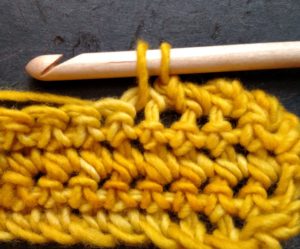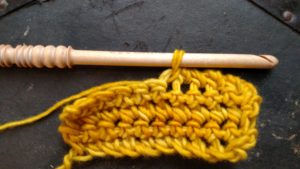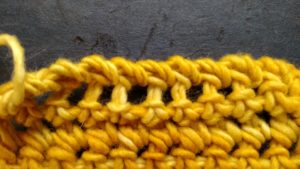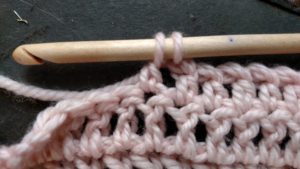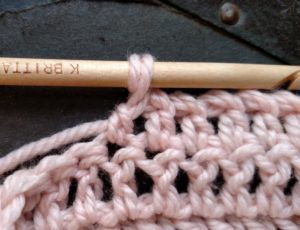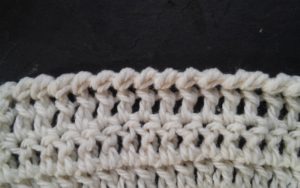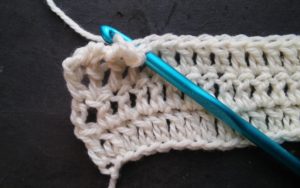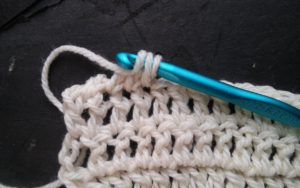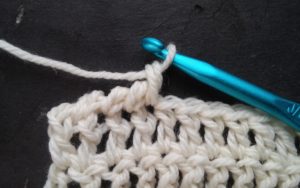 Last week I shared a Basic Hat free pattern, I had an increased number of people wanting to make hats, and they really are great, quick projects, that can help those fighting cancer by the means of chemo therapy. I have designed both of these hats using baby weight yarn, as I find that it is both soft and hypo-allergenic.
Last week I shared a Basic Hat free pattern, I had an increased number of people wanting to make hats, and they really are great, quick projects, that can help those fighting cancer by the means of chemo therapy. I have designed both of these hats using baby weight yarn, as I find that it is both soft and hypo-allergenic.
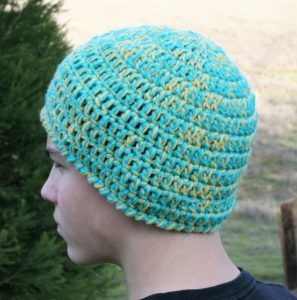 The Beyond Basic Hat is worked holding 2 strands of baby yarn at one time (you could substitute 1 strand of medium weight yarn instead). To use 2 strands is not as difficult as it seems, you simply hold them together and treat them as if they were just 1 strand, so you yarn over using both strands together, you pull through loops using both strands together, they just get worked as one. I find it fun to use 2 different colors, like I did in this sample with teal and lemon yellow.
The Beyond Basic Hat is worked holding 2 strands of baby yarn at one time (you could substitute 1 strand of medium weight yarn instead). To use 2 strands is not as difficult as it seems, you simply hold them together and treat them as if they were just 1 strand, so you yarn over using both strands together, you pull through loops using both strands together, they just get worked as one. I find it fun to use 2 different colors, like I did in this sample with teal and lemon yellow.
I find that this pattern tends to be my go to hat more often, as is really works up fairly fast, however if you want to learn how to customize the size of hat, check out my tutorial, Crochet Hat Formula, here.
Beyond Basic Hat
Materials:
2 skeins Lion Brand Soft Baby light weight yarn (60% acrylic, 40% nylon)
I/9/6mm crochet hook
Gauge: 5 rnds/ 8 dc=3”
This pattern is worked holding 2 strands of yarn throughout.
For directions for the Reverse Single Crochet (Revsc) check out my tutorial here.
Sizes: Baby (Kid, Woman, Man)
Rnd 1(1, 1, 1) Ch 4, 11 dc in 4th ch from the hook, sl st to join.
Rnd 2 (2, 2, 2): Ch 3, dc in same st, 2 dc in each st around, sl st to join.
Rnd 3 (3, 3, 3): Ch 3, dc in same st, dc in next st, [2 dc in next st, dc in next st] rep around, sl st to join.
Rnd – (4, 4, 4): Ch 3, dc in same st, dc in next 2 sts, [2 dc in next st, dc in next 2 sts] rep around, sl st to join.
Rnd – ( -, 5, 5): Ch 3, dc in same st, dc in next 3 sts, [2 dc in next st, dc in next 3 sts] rep around, sl st to join.
Rnd – (-, -, 6): Ch 3, dc in same st, dc in next 4 sts, [2 dc in next st, dc in next 3 sts] rep around, sl st to join.
Rnd 4-8 (5-11, 6-12, 7-13): Ch 3, dc in each st around, sl st to join.
Rnd 9 (12, 13, 14): Ch 1, Revsc around, sl st to join. Fasten off, weave in ends.

